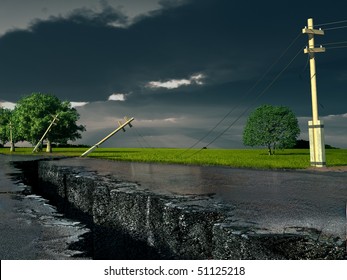

"Then this information can be used to prepare a city, prepare a country," Calais says. Scientists should be able to use the Enriquillo images to predict the strength of future earthquakes and calculate how often the fault has ruptured in the past. LiDAR data records those imprints, such as distinctive fracture patterns in rock and furrows in the topography of the land. "Past earthquakes … leave their imprint on the Earth," said Eric Calais, a geophysicist at Purdue University. But the LiDAR data made clear that the shift was caused not by one, but two, earthquakes. Scientists had previously concluded that an earthquake in 1857 caused the ground to shift 30 feet. "Our dour view of the situation is that it looks like where the fault broke is pretty far to the west and we're now concerned that it didn't rupture in the eastern part," Hudnut said.īecause the possibility of another major earthquake of equal or greater magnitude remains low – around 3 percent over the next 30 days – even if no major ruptures are found, researchers hope to use these images primarily to create computer models that show how the fault has behaved in the past and how it might behave in the future.įor instance, about five years ago, researchers used LiDAR data to map the San Andreas fault in California. With no such ruptures currently visible, Hudnut and his colleagues are worried that the ground beneath Port-au-Prince remains under a great deal of stress that could potentially trigger another, even larger earthquake. The new data could reveal major ruptures along the fault.

Because RIT's team plans to assess damage in Port-au-Prince first, Hudnut will likely have to wait a day or two to receive images of the Enriquillo fault, which lies just outside the city.


 0 kommentar(er)
0 kommentar(er)
